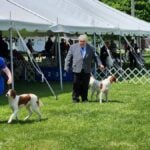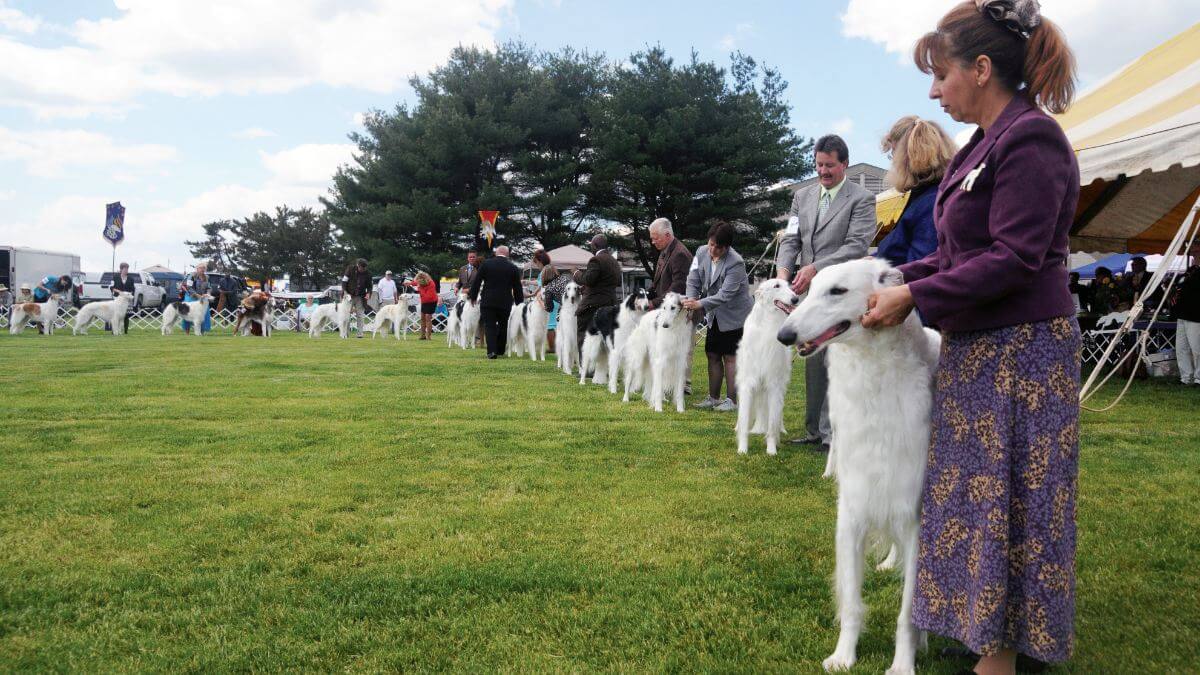
Home » Sight, Scent & Sound

In America, hounds have traditionally been divided into two categories: sighthounds and scenthounds. This neat division, balanced though it seemingly is, considers only two of the senses that hounds utilize when pursuing their prey. Breeds that chase after wolf or deer or gazelle, for example, are blessed with remarkable vision that allows them to locate game across mountainside or desert sand before giving chase at lightning speed. By contrast, breeds that follow their quarry by scent have a superior sense of smell that gives them the ability to track and trail a wide variety of game, from fox and otter to rabbit and raccoon, over wet and dry terrain. Both of these prototypical hounds are impressive in their ability to capitalize so completely on a single virtue. However, there are a few breeds that utilize sound in addition to sight and scent, and they are every bit as proficient in their quest.
The various sighthound breeds were developed as fleet-footed hunters in diverse geographic and cultural regions. From the Fertile Crescent to the Scottish Highlands, and from North Africa to the Boer Republics, these strong and sinewy canines have long accompanied tribal peoples and clan members in their pursuit of food and sport. Many of these breeds have been so highly valued that they could only be owned by a society’s elite—never sold but given only as gifts. Others were equally prized by members of more egalitarian, but nevertheless insulated, communities. In all cases, the hounds that have hunted by sight have always enjoyed a somewhat privileged position in societies that have admired their loyalty as well as their sight and speed.
Of the scenthound breeds, many were originally developed by the nobility or members of the clergy. In Northern Europe, large hounds were bred on palace grounds and in monasteries for the pursuit of everything from rabbits to deer to wild boar. Capable of following a trail over great distances, these deft and determined canines eventually found their way from the royal courts of France to those of Great Britain, and from both nations they were sent to members of the establishment in Colonial America. In the New World, they were transformed from daytime trailing hounds to nighttime treeing hounds for the benefit of both the patriarchy and the proletariat.
Around the Mediterranean Sea, a collection of hounds that hunt by sound as well as by sight and scent were distributed by ancient mariners in places from Malta and Mount Etna to Ibiza and Lisbon. These breeds, characterized by large, upright, and very mobile ears, possess the swiftness of a sighthound, the pack hunting preferences of a scenthound, and the unequalled ability to hear swift-moving prey scampering amid the region’s very rocky terrain. They utilize this trifecta of talents with ease and are just as specialized in their performance as any breed that bears the designation “hound.”
Through the articles and interviews assembled in this edition, SHOWSIGHT has endeavored to celebrate the distinctive and determined breeds of the Hound Group through the words of the breeders, judges, and exhibitors who know them best. We hope you enjoy!
